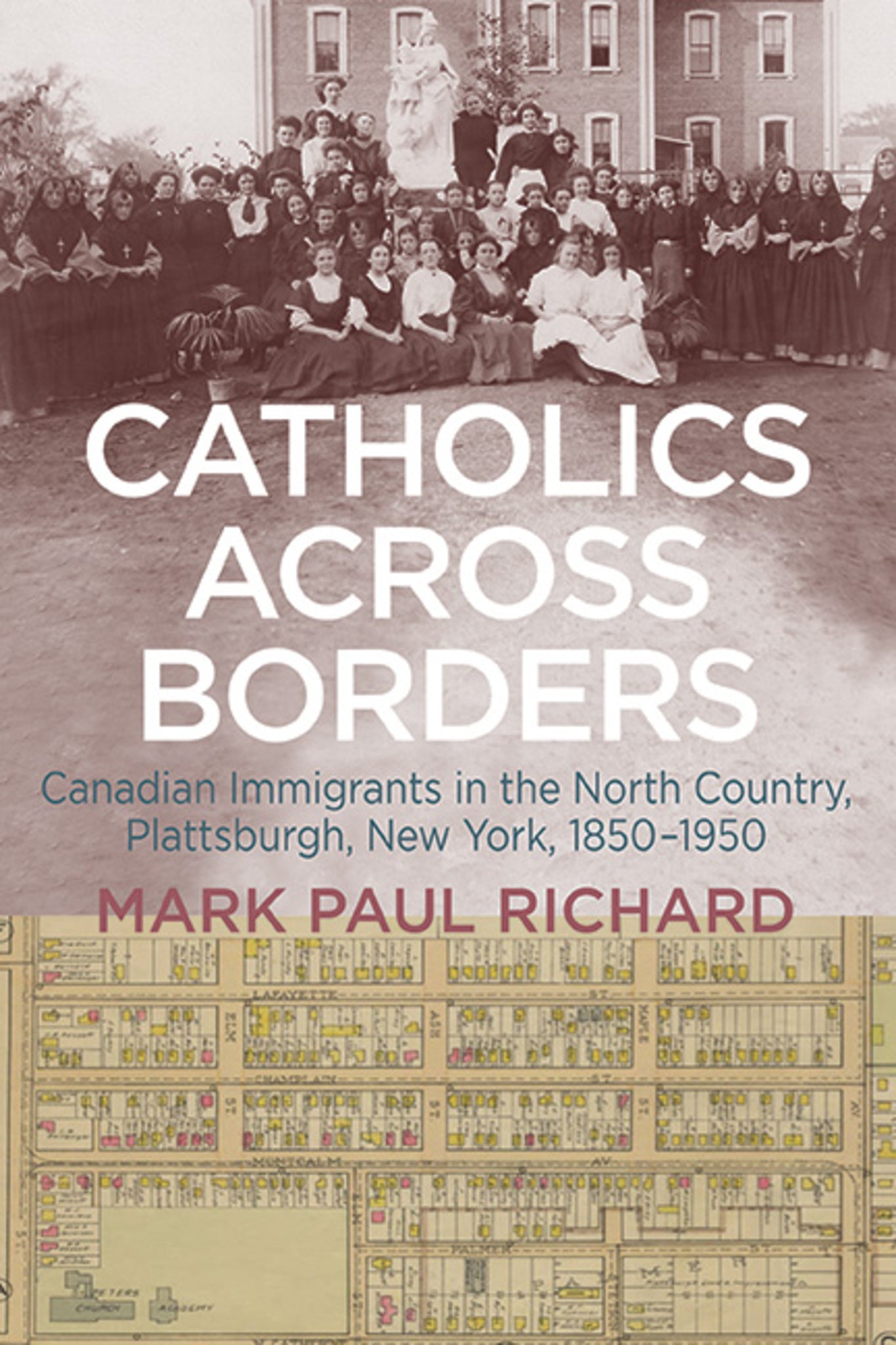We're sorry. An error has occurred
Please cancel or retry.
Catholics across Borders

Some error occured while loading the Quick View. Please close the Quick View and try reloading the page.
Couldn't load pickup availability
- Format:
-
01 February 2024

Illuminates the cross-border migration and settlement of Catholics from Canada to northern New York.
Catholics across Borders examines the evolution of a French-speaking population in Plattsburgh over a century. Contrasting with New England's francophone textile mill centers, Plattsburgh featured interethnic cooperation instead of conflict. The book explores how international events affected French Catholic identity at the local level, drawing from French-language newspapers and Catholic archives. Transnational Catholic migrants from Canada and France played a significant role in shaping local, regional, national, and international history in Plattsburgh and beyond, contributing to the larger narrative of the U.S. immigrant experience. This study provides a historic perspective for understanding the present.


"…Catholics across Borders is a significant contribution. It expands the geographic and conceptual horizons of Franco-American history beyond its familiar rut of smokestacks and steeples, offering a valuable opportunity to examine French Canadian immigrant life under alternative economic and social conditions. Its archival rigor, narrative ambition, and invitation to rethink entrenched frameworks make it a valuable point of departure for more variegated and nuanced understandings of the French fact in the United States." — American Catholic Studies
"Catholics across Borders fills an existing hole in the historiography of immigration and ethnicity in the United States. French Canadians are an understudied group, even though they are one of the largest immigrant groups of the nineteenth and twentieth centuries … Beyond making a significant contribution to immigration, borderlands, and ethnic history, Richard's book also enhances our understanding of American religious history and women's history." — Leslie Choquette, Assumption University
"Despite the massive immigration of French Canadians to the United States from approximately 1860 to 1930 and the contributions of this sizeable ethnic group to the development of towns and cities throughout the northeastern United States, Franco-American history and heritage are largely overlooked … Thankfully, this work addresses this gap. Dr. Richard's … scholarship is extraordinarily sound and thorough." — Janet L. Shideler, Siena College
List of Illustrations
Preface
Introduction
1. The Collaboration of the Irish and the French Canadians: Creating a Catholic Community, 1850–1870
2. Oblate Priests, Grey Nuns, and Ethnic Institutions: Forging a French-Canadian Community, 1870–1900
3. An Execution in Canada, a Murder in Plattsburgh, and Le National: Shaping Francophones' Political Consciousness, 1870–1900
4. Religious Habits, Catholic Institutions, and the Champlain Tercentenary: Ringing in the Twentieth Century, 1900–1910
5. The Contest between the Grey Nuns and Local Physicians: Founding Nonsectarian Community Hospitals, 1900–1920
6. The Visibility of the Canada–US Border: Separating Nuns and Nations, 1910–1920
7. The Era of the Second Ku Klux Klan: Pursuing Interfaith Collaboration while Expanding Catholic Institutions, 1920–1930
8. The Depression Years: Collecting Nickels, Dimes, and Quarters, 1930–1940
9. Plattsburgh during World War II and the Early Cold War: Retaining a Catholic Heritage, 1940–1950
Conclusion
Afterword
Appendix
Abbreviations
Notes
Index



